How to grow tomatoes vertically — the trick to getting a bumper crop of homegrown tomatoes in a tiny garden
Not sure how to grow tomatoes in a small space? It's time to take them to new heights...
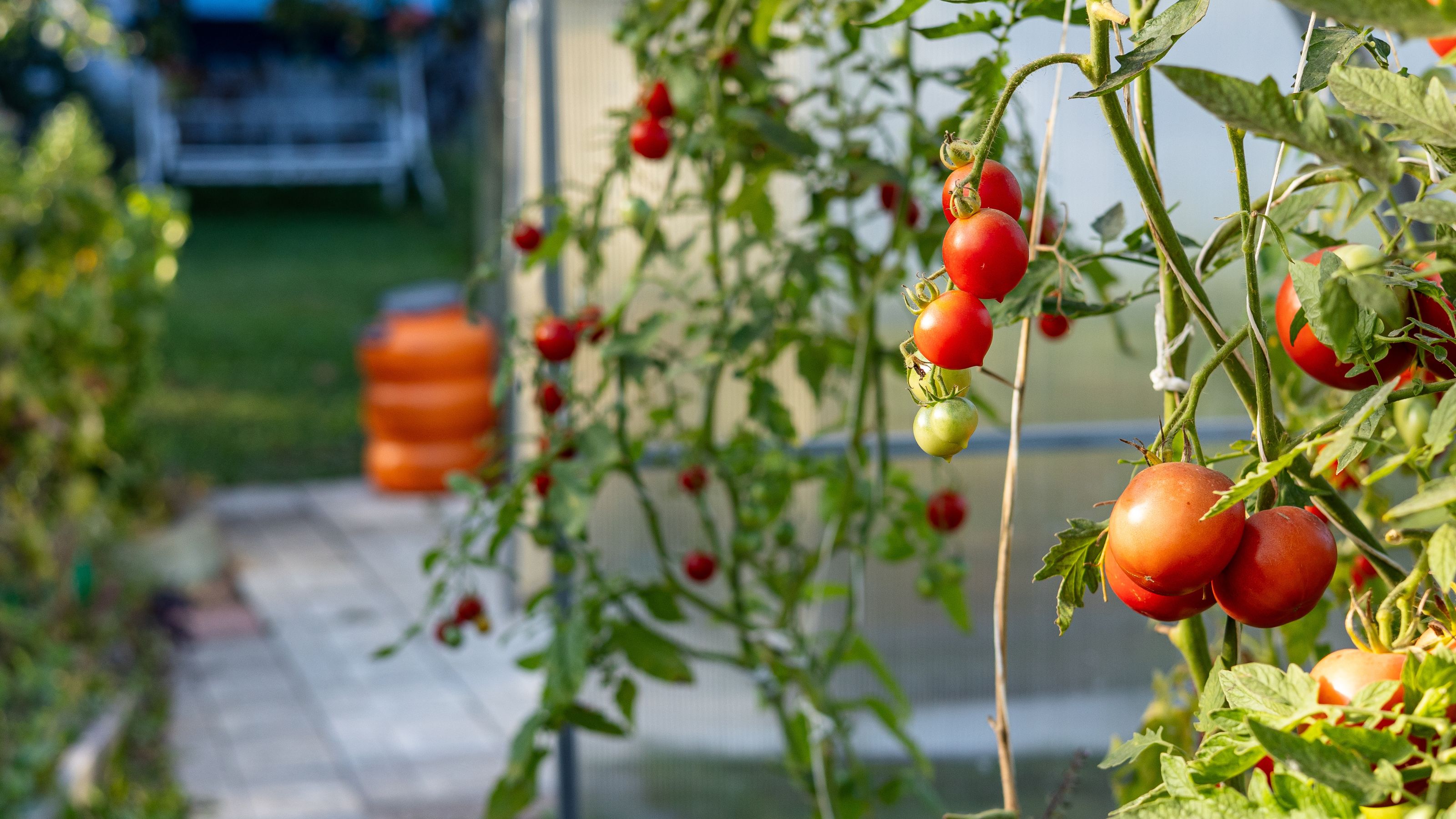

If you thought you couldn't grow your own in a small garden or balcony, then think again. Learning how to grow tomatoes vertically is one of the best ways to treat yourself to a bounty of homegrown tomatoes with a small footprint.
Learning how to grow tomatoes has a reputation for being tricky as they require feeding and sometimes assistance ripening. However, once you get used to the whims of tomatoes they can be incredibly satisfying to grow and growing them upwards can actually boost the number of tomatoes you get per plant, too.
'Growing tomatoes vertically can help to save space in any size garden but can be especially useful for growing in small spaces,' promises Morris Hankinson, director of Hopes Grove Nurseries.

Morris Hankinson is the founder and managing director of Hopes Grove Nurseries Ltd, the UK’s only specialist grower-retailer of hedging plants, which he established after graduating with a Commercial Horticulture Degree from Writtle College, Essex in 1992.
'Even in a larger garden, vertical growing can increase harvests so it’s a great way to grow homegrown delicious tomatoes,' he adds.
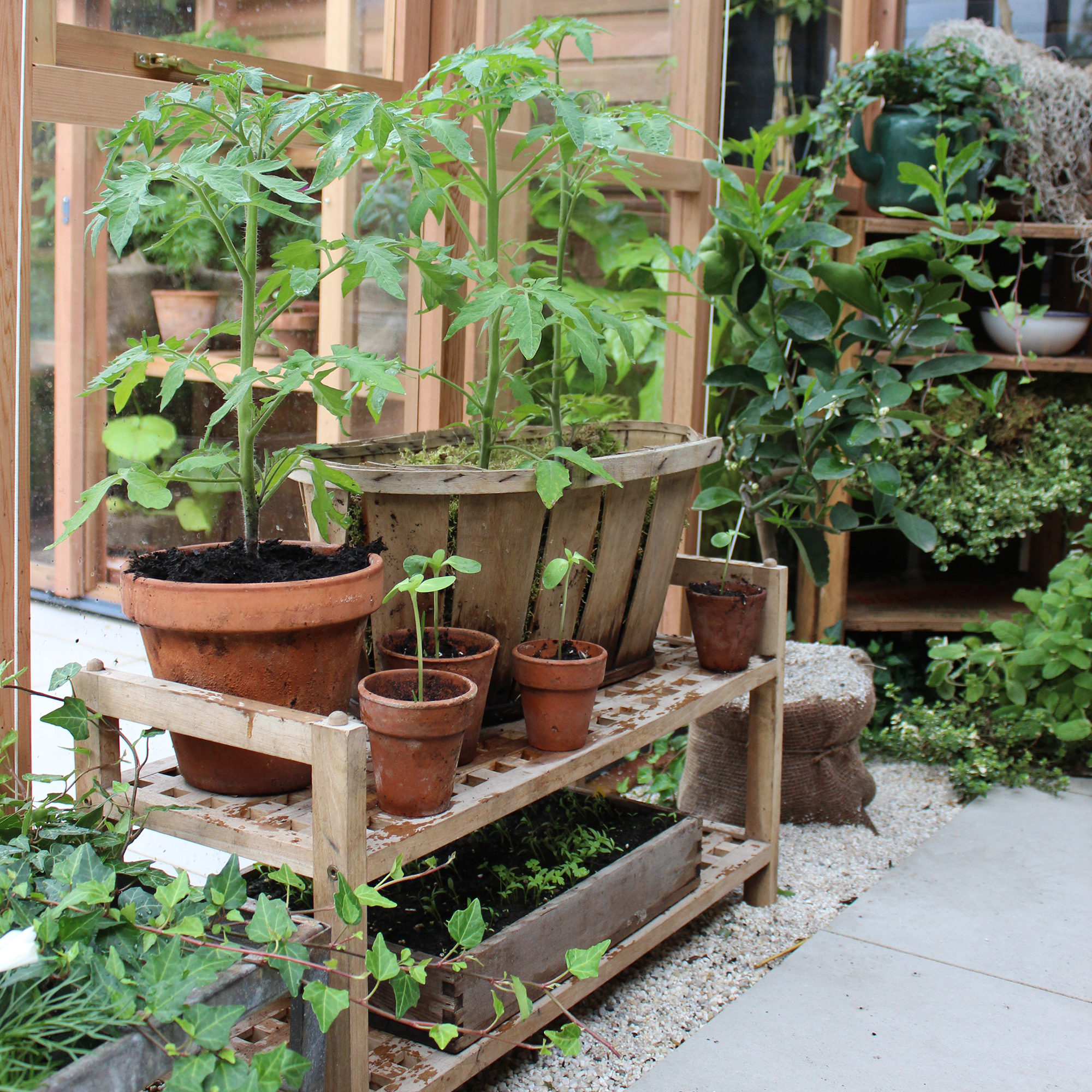
What you will need
- A good quality peat-free compost, like Levington Peat Free Multi-Purpose Compost from Homebase
- A supportive cane or trellis, like the Mininfa Natural Bamboo Canes from Amazon or the Outsunny Garden Planter Topped Trellis from Homebase
- A high potassium liquid fertiliser, like Maxicrop’s Tomato Growth Stimulant and Feed from Amazon
'If growing in containers or raised beds, make sure they are large and deep enough for strong root growth,' adds Morris.
'And don't forget that growing vertically will require good supports in place for the vines to be tied on to to grow up instead of leaning over and potentially breaking.'
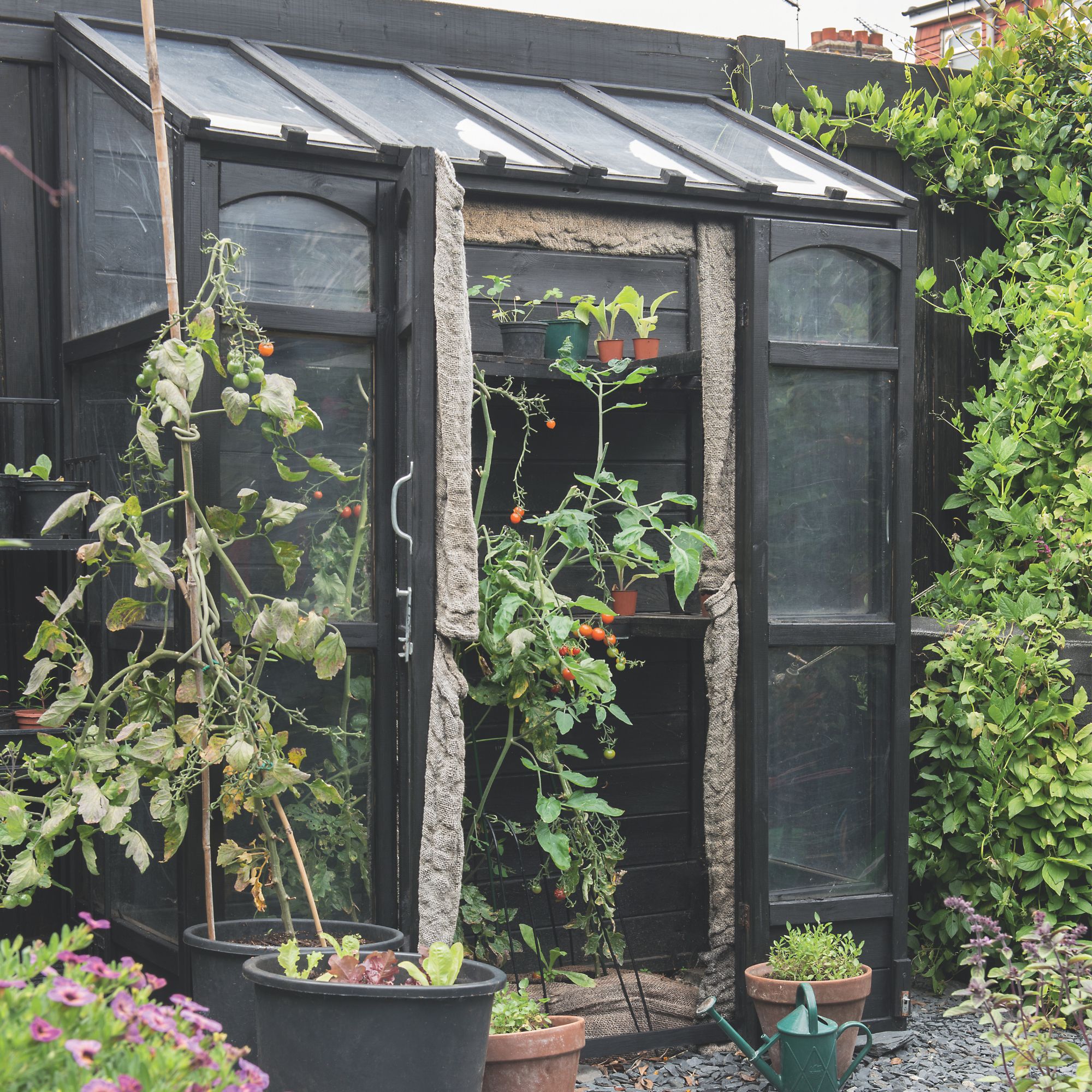
Step-by-step guide
Once you've gathered all of your tools and equipment to hand, it's time to get started on learning how to grow tomatoes vertically in earnest.
Get the Ideal Home Newsletter
Sign up to our newsletter for style and decor inspiration, house makeovers, project advice and more.
Here's what you need to do...
1. Sow your tomato seeds
If you want your tomatoes to reach dizzying new heights, you need to sow seeds successfully – and, thankfully, it's a very beginner-friendly task.
'Tomato seeds can be sown as early as late February, but as the temperatures are still very chilly outside it’s always best to start them off indoors,' says Angharad James, product manager at Maxicrop. 'Contrary to what some may believe, you don’t need a greenhouse to grow tomatoes – a sunny kitchen windowsill will work just as well!'
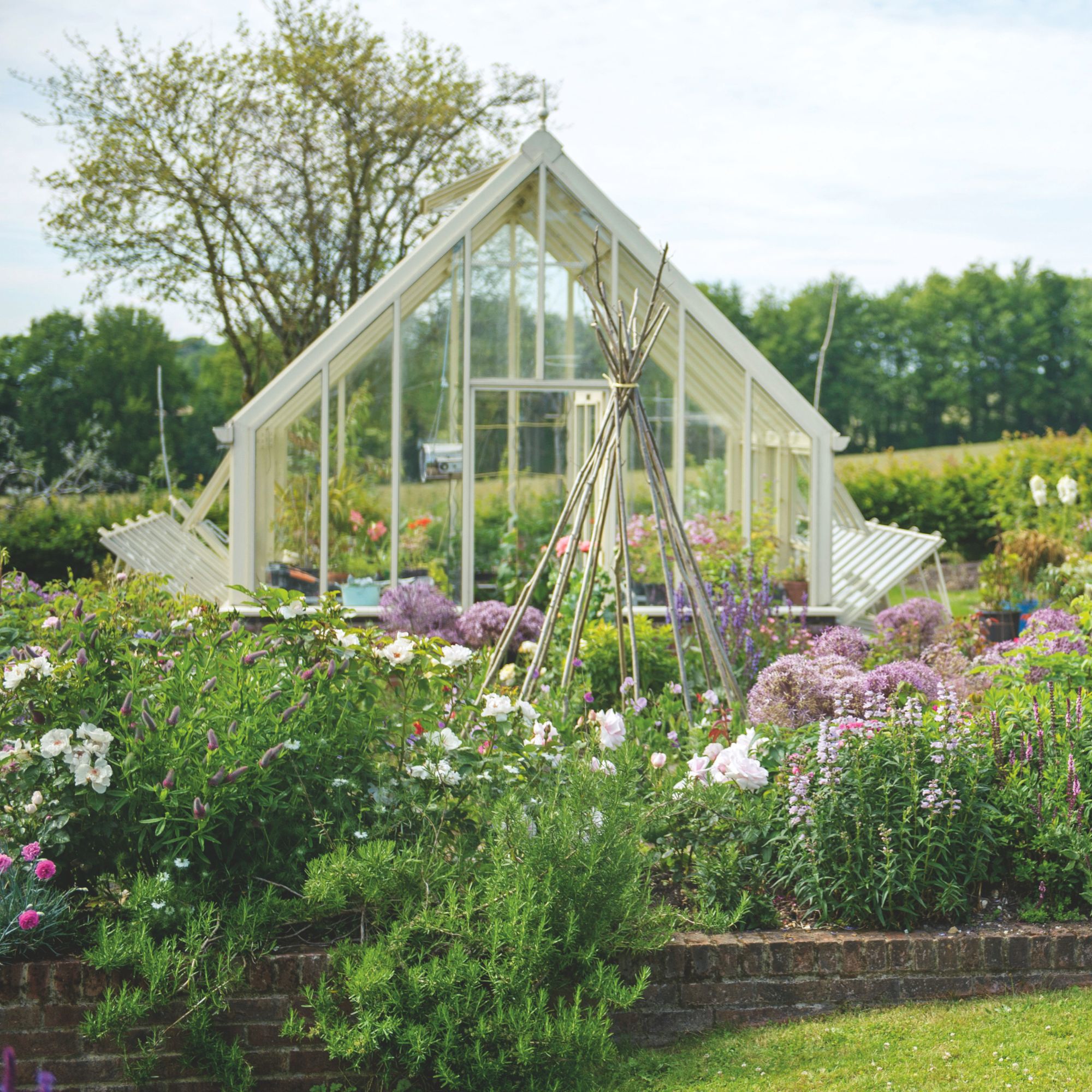
Angharad goes on to explain that you should start by filling seed trays or small pots with good quality, peat-free compost and lightly firm the surface.
'Place the seeds on top of the soil about one to two centimetres apart, and cover with a fine layer of compost or vermiculite. Water lightly and place in a warm, sunny position,' she says, noting that you can use cling film or half an upturned plastic bottle to cover the seed as a mini propagator.
'Within two or three weeks, the seed will begin to germinate and you should see a seedling sprout through the compost. Continue to water seedlings regularly, and as they establish they can be potted on into individual pots, so that each plant has its own space to grow.'
2. Find the perfect spot
Your tomato plants should only be moved outside once all risk of frost has passed, usually in May. Still, it doesn't matter if you want to grow tomatoes vertically or not, the same rules apply when it comes to finding them the perfect spot.
'They need to be in full sun with at least 6 hours or more of sunlight a day and a temperature of at least 18 degrees,' says Morris, noting that this means a south-facing spot is usually best.
3. Support with a trellis
Growing tomatoes vertically will require support in the form of a trellis or stakes to support the plant as it climbs. Morris explain that 'there are so many ways to support tomatoes from simple bamboo canes to trellis, and anything strong enough to hold the weight of the plant'.
'These will need to be in place before planting to ensure there is no damage to the plant or roots as they grow,' he says.
If you really want to recreate that warm Mediterranean climate so beloved by tomatoes, Angharad says that you should also provide protection from the wind by using a natural windbreak such as a wall, fence or hedge. 'Positioning plants near a wall or fence also brings the added bonus of reflecting heat from the sun,' she notes.
As your tomatoes grow you can train them up a trellis vertically by tying lengths of string or soft garden twine from the bar. Then, when the plant is about 18 inches tall, you can tie the string to its stem and train it as they grow.
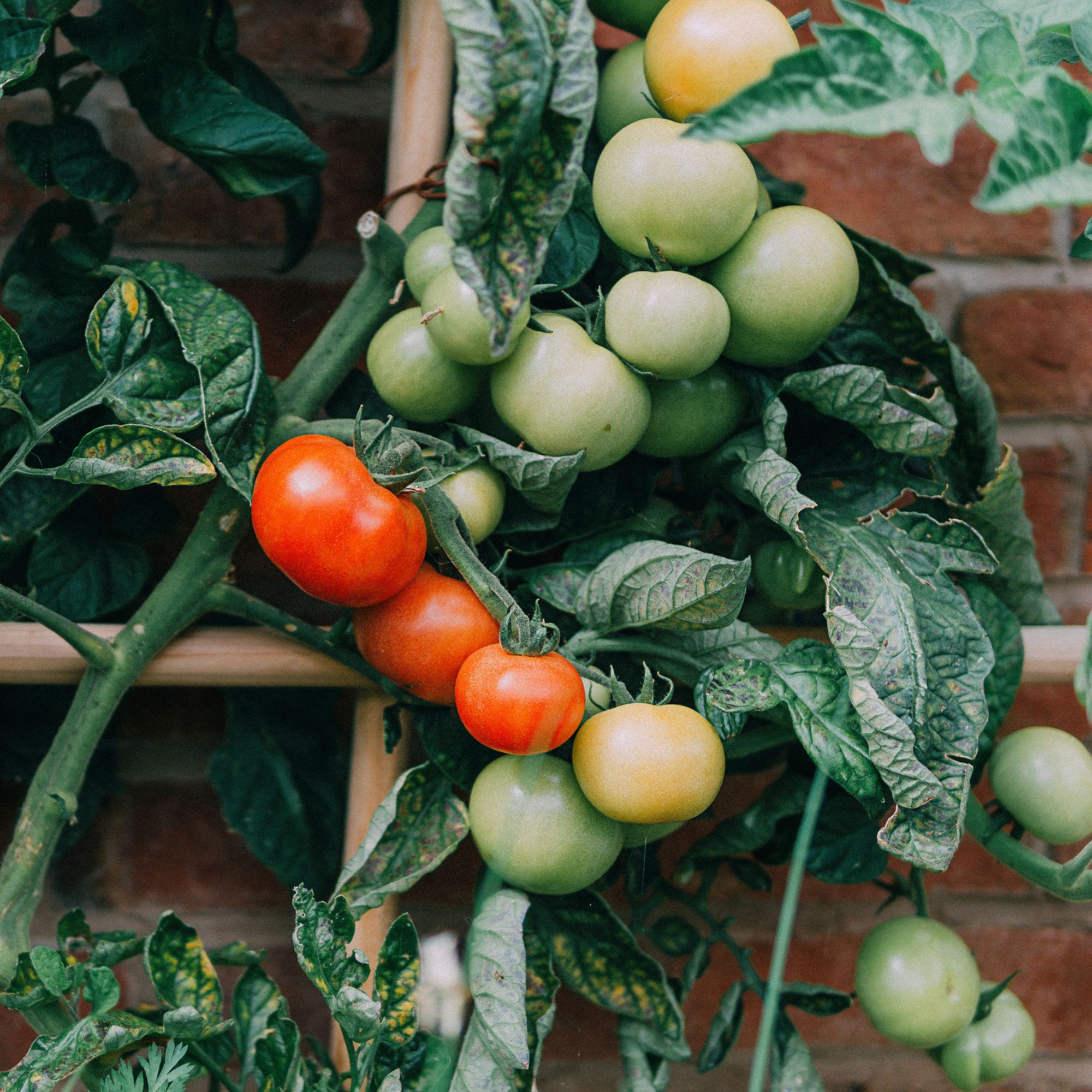
4. Show them some TLC
Whether you want to learn how to grow tomatoes vertically or (ahem) horizontally, you'll need to keep them well fed and watered.
'Tomatoes need consistent water, so make sure you can reach the base for watering and try not to water over the leaves as this can leave the plants more susceptible to blight,' says Morris.
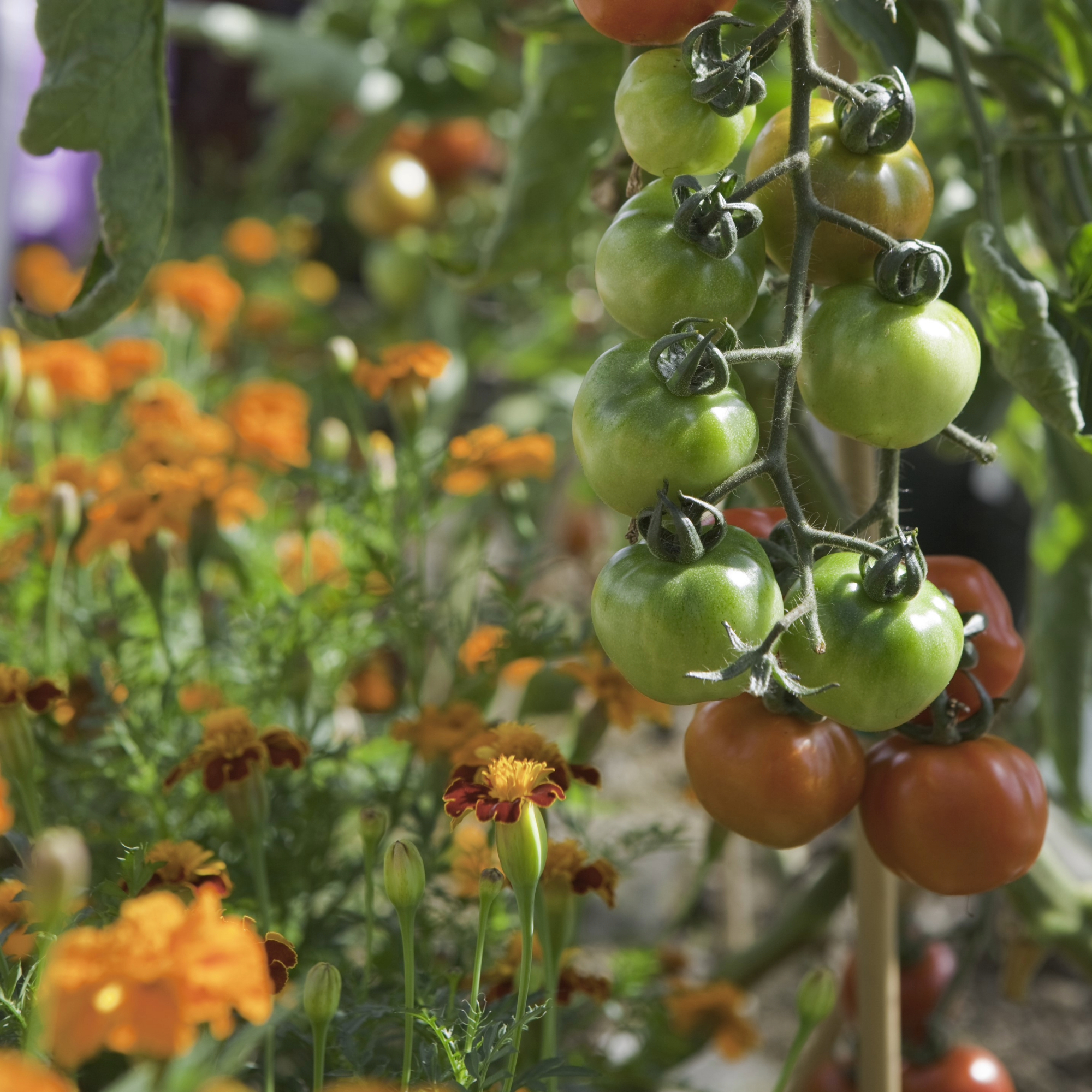
Angharad adds that 'tomatoes are heavy feeders, requiring specific nutrient levels at different stages of their growth,' so you will need a specialist tomato fertiliser (such as Maxicrop’s Tomato Growth Stimulant and Feed) for a successful yield.
'Simply add to your watering can and apply to the base of plants every seven days once the first trusses – or stems that support flowers and fruits – have appeared,' she advises.
5. Prune like a pro
If you want to grow tomatoes vertically, you will need to learn how to prune tomato plants like a pro.
'In order to ensure the vine is well supported and grows upwards, prune off the small side shoots to keep the plant focussing energy on producing fruit and not foliage,' explains Morris.
'Tie in the main stem to the support gently as the plant grows.'
6. Harvest and enjoy
Vertical or not, tomatoes take the same amount of time to grow – which means you'll have to patiently wait for around 60-100 days before they're ready to eat.
'You’ll know that your tomatoes are ready to pick when there are no green areas left on the skin of the fruit. Simply pinch it off from the top of the plant, and it should come away easily if it is ready,' says Angharad.
'Remember, don’t store your tomatoes in the fridge, as the cold temperature will ruin the rich flavour! Keep them at room temperature on your kitchen counter and aim to eat them within a few days of harvesting to enjoy them at their best.'
What are the best tomatoes to grow vertically?
If you're ready to learn how to grow tomatoes vertically, you'll want to make sure you are working with the right variety of tomato before you begin.
'It’s important to choose a tomato variety that will grow vertically. For example tumbling tomatoes grow in pots and hanging baskets ideally and bush tomatoes can be grown vertically but are more compact,' advises Morris.
As such, he suggests you look for vine (indeterminate) varieties. Try something like the Beefsteak tomato from Crocus, the Gardener's Delight tomato from Sarah Raven, or the Sungold tomato from Thompson & Morgan.
Now that you know how to grow tomatoes vertically, you can set to work training your toms to reach dazzling new heights. Just be sure to research plenty of pasta and salad recipes so you can use your tasty harvest up come the summer...

Kayleigh Dray became Ideal Home’s Acting Content Editor in the spring of 2023, and is very excited to get to work. She joins the team after a decade-long career working as a journalist and editor across a number of leading lifestyle brands, both in-house and as a freelancer.
You must confirm your public display name before commenting
Please logout and then login again, you will then be prompted to enter your display name.
-
 Should your front door colour match your hallway? Interior experts reveal 3 reasons why it should (and 3 reasons it shouldn't)
Should your front door colour match your hallway? Interior experts reveal 3 reasons why it should (and 3 reasons it shouldn't)Are you team matching or contrasting?
By Ellis Cochrane
-
 This £200 limited-time discount makes this Dyson vacuum cheaper than I’ve ever seen it - run don’t walk to Argos for this bargain
This £200 limited-time discount makes this Dyson vacuum cheaper than I’ve ever seen it - run don’t walk to Argos for this bargainIt's the most affordable Dyson on the market right now
By Lauren Bradbury
-
 Martin and Shirlie Kemp’s pastel flower beds has given their Victorian renovation a romantic look - how you can get the look
Martin and Shirlie Kemp’s pastel flower beds has given their Victorian renovation a romantic look - how you can get the lookTheir pastel garden is the cottage garden inspo you've been looking for
By Kezia Reynolds